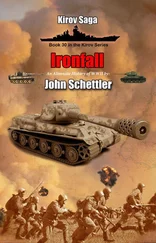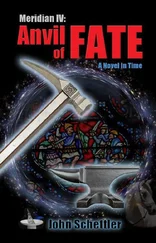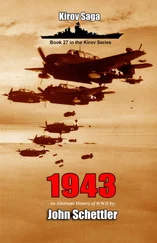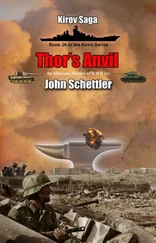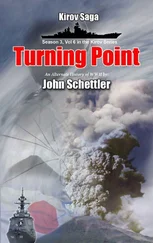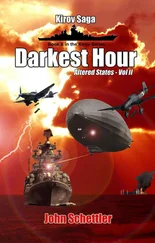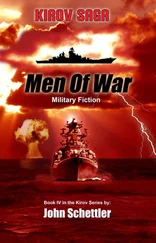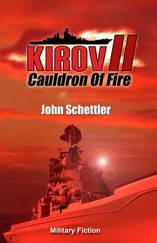“He drew this in January of 1941,” said the professor. “Four months before this campaign. Here’s the translation : ‘We, U-556 (500 tons), hereby declare before Neptune, Lord over oceans, seas, lakes, rivers, brooks, ponds, and rivulets, that we will provide any desired assistance to our Big Brother, the battleship Bismarck (42,000 tons), at any place on the water, under water, on land, or in the air. Hamburg, 28 January 1941 – Commander & Crew, U-556.’ And in every variation except our RAM Bank history, he gets a chance to save Bismarck in much the same way.”
“Not by stopping the enemy torpedoes,” said Maeve, “but by saving and using one of his own.”
“I always did say the best defense is a good offense,” said Paul.
“I thought Napoleon had the copyright on that line,” Maeve winked at him.
“And here’s another note,” Robert went on. “It’s from a British Royal Navy interrogation of Wohlfarth after he was captured later that year. In these notes it seems U-556 carried a total of twelve torpedoes, not ten: five in the tubes, five in reserve, and two mounted in a special container on deck. Now… He sunk six ships, and damaged one other according to our RAM Bank. That accounts for at least seven of his first ten torpedoes. I’ve looked up all the reports of those ships, and he put two fish into Darlington Court , and another two into British Security. That makes nine, with one left over. Our RAM Bank data shows he used that last torpedo on the light steamer Cockaponset . That’s the ship he passes over in all the altered Meridians, urged to do so by his executive officer Schaefer and sub-lieutenant Souvard.”
“In the altered Meridian, however, it’s the Darlington Court that survives. Cockaponset gets torpedoed instead,” said Paul.
“Six of one, half dozen of the other,” said Maeve. “The main point is that one ship survives. And on my watch survivors who are supposed to be dead become a real problem. Just look at old St. Lambert from our last mission for a good example, and now look at the father of this terrorist as well. Survivors become a real problem.”
“What about the last two torpedoes he had stored on deck?” asked Paul. He had been unaware of this information all along, just another of these small details that are so easily lost in the history.
“The British report states they could not load them into the U-boat due to the rough seas.”
“Thank God for that,” said Maeve. “I can only imagine what he would have done if he had three torpedoes left over instead of only one.”
“Yes,” said Paul, “but in this scenario we have to imagine a way in which he has none. Zip. Nada. It’s the only way the British get to Bismarck . So it’s down to this, as far as I can see. We either find a way to stop this cheeky U-boat captain, or we back out of this intervention and send that warning to disregard Lonesome Dove—but if we do that, we lose that easy handle for feeding in more information if we ever have to. Trying again with another independent code will likely be viewed with some suspicion. In fact, they may even change the code. Then we’d be stuck.” He looked at them, his face as serious as they had ever seen him before.
“I suggest we take a vote,” said Kelly.
Lawrence Berkeley Labs, Arch Complex, 12:15 P.M
“There may besomething more here,” said Robert. “This steamer that survives the attack by U-556 —it may be more significant that you think, Maeve. In all the altered data I uncovered, it remained consistent. Darlington Court survives again and again, yet our RAM Bank data clearly shows she was the first ship sunk by Wohlfarth when he attacked convoy HX-126. I’ve got exact times from the convoy reports and ships logs.
“Here… I ran down the service history of this ship. It was the sister ship to the Arlington Court , a vessel that was picked off by U-boats as a straggler from convoy SL-7A, on November 16, 1939. It was built by the same company that commissioned the Darlington Court, and get this…. The captain of Arlington Court, a man named Charles Hurst, had an interesting history as well. He loses his ship and gets a new assignment, the Darlington Court, only to suffer the same fate as her sister ship—picked off as a straggler from Convoy HX-126. The captain survives both attacks.”
The professor flipped through his notes and then keyed in a search to the RAM Bank. “Here is the testimony of Chief Engineer A.H. Stirling, who was on the Darlington Court when she was hit: ‘About 12:58 the same day, in position 57 18N 41 07W, as our Escort hoisted a signal reporting a submarine on our starboard side, we were struck by a torpedo on the port side in the engine room, followed 2 seconds later by another torpedo in the deep tank forward of the engine room. The sea was calm, wind slight, weather was fine and visibility hazy. We were making 8 1/2 knots on Course 035°. The first explosion, which was heavier and sharper than the second, stopped the main engine immediately, and the second torpedo, which struck the deep tank, split the ship in two. The ship capsized immediately, and in about 45 seconds she was out of sight.
I had only just come out of the engine room when the torpedo struck us and, finding it impossible to enter it again, I came on to the boat deck, trying to get my lifebelt over my head, when I was washed over the side. When I came to the surface I looked for wreckage but could not see anything except the blazing tanker, British Security, directly astern of us, which was torpedoed immediately after us. The flames were about 60 ft. high, and a huge column of smoke appeared to come out of the water and burst into flame. I swam about for 3 hours and about 16:00 I managed to reach our starboard lifeboat at the same time as the captain.’”
“So it’s clear from our touchstone data that Darlington Court was attacked by U-556 well before British Security, ” said Paul.
“Until things changed,” said Robert. “Now then… Here’s the eyewitness report from our RAM Bank of Captain B. Green of the Cockaponset. This was to be the third ship sunk that night by U-556. In our old history this is the ship Wohlfarth wastes his last torpedo on, not Darlington Court as Kennedy had it in his book. The times in these reports confirm that. He uses Greenwich Mean Time here, which accounts for the difference between this and the Commodore’s report, but the basic sequence of events is the same. Listen: ‘At 12:50 the Darlington Court,which was No. 41 in the convoy, was torpedoed. About 2 minutes after the Darlington Courtwas torpedoed a Tanker astern of her (this was British Securityin station 42) was struck by a torpedo, and almost immediately caught fire. Another tanker astern got into the flames from the other tanker, and when she came out we noticed that she also was on fire, continuing to burn for 3 days. At 12:55 we made an emergency turn of 90° to port and proceeded at full speed, but we had to make more than 90° turn in order to keep clear of the flames.
At 13:10 when in position 57.24N 40.56W, the sea being calm, wind S.E. force 2, the weather fine and the visibility good, we were struck by a torpedo on the starboard side in No. 4 hatch. All the hatches were blown off and the ship immediately listed and water came over the after deck. No one saw the wake of the torpedo.’”
“Well that about nails it,” said Paul. “He gives the exact times each ship was hit, and Darlington Court gets it first. Yet in the altered Meridians—at least as far as we could tell—that ship is the survivor.”
Читать дальше

